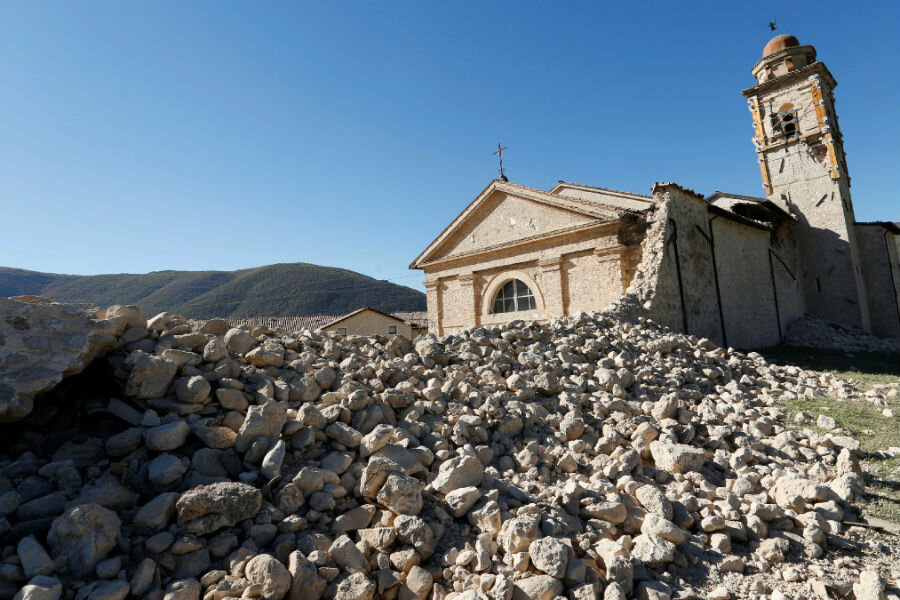6.6 magnitude quake strikes an already shaken central Italy
Loading...
Many in central Italy were shaken awake Sunday morning by an earthquake, the worst the country has experienced in over three decades.
The 6.6 magnitude quake struck at 7:40 am local time, injuring at least 20 people and inducing panic among residents of affected areas. There were no immediate reports of death, though the damage in some villages was still unknown at press time, CNN reports. The quake, which was felt by roughly 13 million people, was Italy's strongest in 36 years.
Many residents of the region were prepared for the quake, and had already left their homes for emergency camps and hotel rooms paid for by the government. But the disaster caused severe damage to a number of historical structures, including the Basilica of San Benedetto, which dates back to the 14th century, in Norcia.
"It's as if the whole city fell down," Norcia city assessor Giuseppina Perla told the ANSA news agency, as reported by the Associated Press.
Rescuers flooded the area soon after the earthquake hit, working through the aftershocks that occurred every 20 minutes to evacuate those in and near the affected buildings, including a group of nuns. Six people were pulled alive from the rubble in Norcia, and three in the town of Tolentino, according to the BBC.
Monks at the monastery of San Benedetto, an international Benedictine community in Norcia, tweeted a photo of the collapsed basilica.
"The monks are all safe, but our hearts go immediately to those affected, and the priests of the monastery are searching for any who may need the Last Rites," the monks said in a statement.
Pope Francis also acknowledged the quake in his Sunday blessing in St. Peter's Square, telling the crowd that he was "praying for the injured and the families who have suffered the most damage, as well as for rescue and first-aid workers."
Later in the day, Prime Minister Matteo Renzi vowed to find the financial resources to rebuild all the homes, churches and other culturally significant buildings destroyed on Sunday morning.
"We will rebuild everything – the houses, the churches, the shops," he said at a news conference, AP reports. "We are dealing (with) marvelous territories, territories of beauty."








